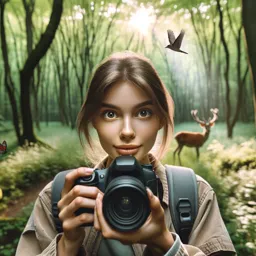Introduction
Wildlife photography is more than just a pursuit of breathtaking images—it’s a practice that requires respect for nature, patience, and a deep understanding of animal behavior. As humans, we are mere visitors in the wild, and our responsibility as photographers is to capture the natural world without disturbing its delicate balance.
The Ethics of Wildlife Photography
One of the core principles of ethical wildlife photography is minimizing our impact on animals and their habitats. This involves:
- Maintaining a safe distance from wildlife
- Avoiding baiting or luring animals for better shots
- Following park and reserve guidelines
- Sticking to marked trails to prevent habitat damage
- Staying aware of local laws and ethical codes
Blending In: Techniques for Stealth
To capture authentic moments without causing stress or harm, wildlife photographers must learn to remain as ‘invisible’ as possible. Techniques include:
- Wearing neutral-colored clothing to blend into the environment
- Using natural cover, such as bushes or hides
- Moving slowly and quietly, with minimal sudden movements
- Utilizing telephoto lenses to shoot from a safe distance
The aim is to observe and document natural behavior, not inadvertently influence it.
Understanding Animal Behavior
Knowledge is a wildlife photographer’s greatest tool. Spend time learning about your target species’ habits, feeding patterns, and territoriality. This will not only increase your chances of an impactful image but also ensure you don’t disturb the animals or put yourself at risk.
Preparation and Respect in the Field
Preparation is key for ethical wildlife photography. Pack appropriately with:
- Sufficient water and food (avoid leaving litter)
- Weather-appropriate clothing
- A first-aid kit and safety gear
- A checklist for your camera, batteries, and lenses
- Field guides or apps for animal and track identification
Remember, always leave no trace. Take only photographs—leave only footprints.
Stories with Purpose
Becoming an ethical wildlife photographer means developing a storytelling vision—one that inspires respect and admiration for the natural world. Use your images to educate, advocate for conservation, and bring awareness to the fragility of wildlife populations and their habitats.
Conclusion
Ethical wildlife photography goes far beyond technical skills. It’s about cultivating respect, curiosity, and a commitment to protect the wild spaces and creatures we photograph. By staying invisible and responsible, we can ensure our passion for wildlife photography benefits both the photographer and the photographed.
































